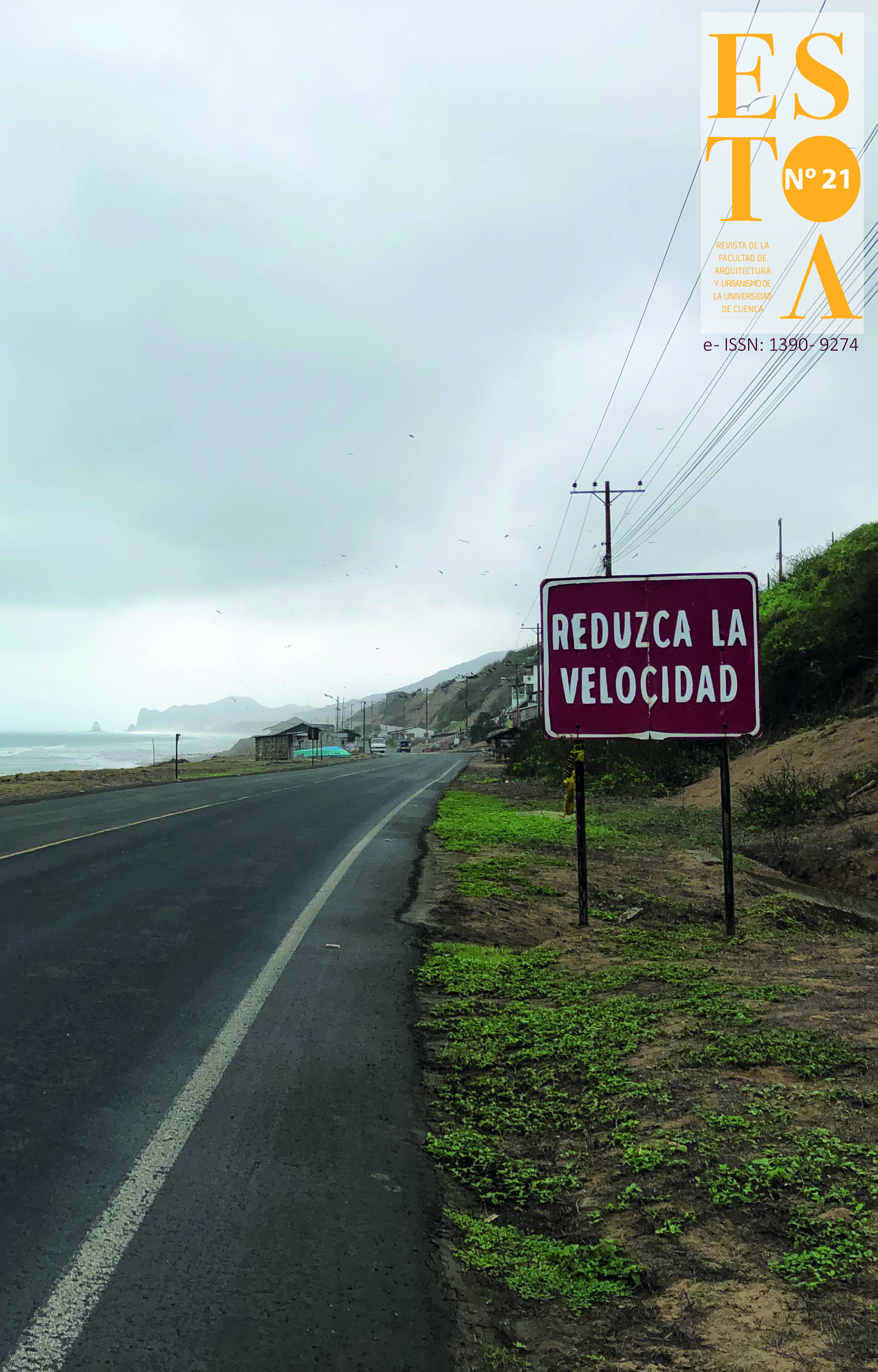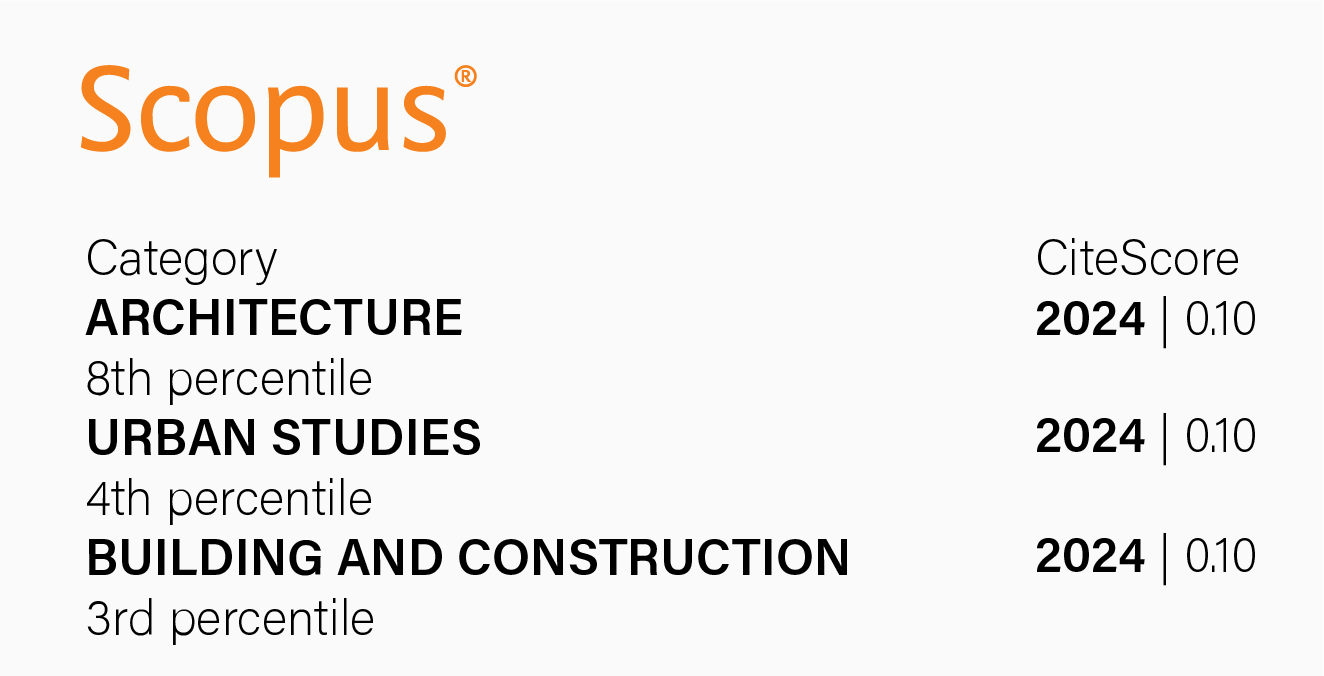Analysis of the conditions of pedestrian mobility due to territorial fragmentation. Case: Las Lajas neighborhood, Atlixcáyotl Territorial Unit, Puebla, México
DOI:
https://doi.org/10.18537/est.v011.n021.a14Keywords:
Pedestrian mobility, territorial fragmentation, socio-spatial segregation, urban planning, public politicsAbstract
The inhabitants of marginalized neighborhoods in the Atlixcáyotl Territorial Unit face various mobility conditions when making long journeys to evade the barriers caused by the avenues and infrastructure built by implementing urban planning instruments in recent decades, which caused a territorial fragmentation in this area. The objective is to carry out an analysis of the conditions of pedestrian mobility of the inhabitants of Las Lajas by the implementation of urban planning instruments to generate recommendations that can lead to public policies. The methodology used was based on a theoretical review and analysis of legal instruments, techniques such as field trips and measurements of time and distance, as well as the application of questionnaires and interviews. The results obtained show how the urban planning instruments prioritized the construction of projects and roads that fragmented the territory, conditioning the modes of pedestrian mobility in the neighborhoods of this area.
Downloads
References
Alcántara Vasconcellos, E. (2010). Análisis de la movilidad urbana. Espacio, medio ambiente y equidad. Corporación Andina de Fomento.
Arias Santa E. y Penagos Barrios, J. G. (2021). Análisis del crecimiento urbano en el municipio de Tocaima - Cundinamarca, durante los años 2010 al 2020. Universidad Piloto de Colombia Seccional del Alto Magdalena. Facultad de ingeniería. Programa de Ingeniería Civil.
Arnal Simón, L. y Betancourt Suárez, M. (2021). Reglamento de construcciones para el Distrito Federal. 12va edición. Editorial Trillas.
Bazant Sánchez, J. (2015). Planeación urbana estratégica: métodos y técnicas de análisis. Editorial Trillas.
Boudeguer Simonetti, A., Prett Weber, P. y Squella Fernández, P. (2010). Ciudades y espacios para todos. Manual de Accesibilidad Universal. Corporación Ciudad Accesible Boudeguer y Squella ARQ.
Cabrera B., V. y Guerrero B., J. M. (2008). La política de suelo en Puebla. La reserva territorial QuetzalcóatlAtlixcáyotl: fuente de segregación socioespacial y riqueza selectiva. Facultad de Arquitectura-BUAP.
Cabrera B., V. (2015a). Globalización, identidad y equipamiento. En A. Álvarez Mora y A. V. Díaz de León (Coords.), Ciudad, territorio y patrimonio. Materiales de Investigación III. Benemérita Universidad Autónoma de Puebla.
Cabrera B., V. (2015b). Elitismo de la política urbana. centro histórico de Puebla, México. Revista Mañongo, 23 (44), 43-70.
Carranza Luna, J., Martínez López, V. y Domínguez Domínguez, D. (2018). El nuevo desarrollo territorial, sectores urbanos globalíficos. Universidad Nacional Autónoma de México, Asociación Mexicana de Ciencias para el Desarrollo Regional.
Castillo-García, R.F. (2018). Hacia una política pública de desarrollo urbano sostenible en el Perú. Paideia XXI, 8 (1), 139-160.
Díez-Pisonero, R., (2020). Ciudades y conectividad aérea en el sistema mundo: nodos consolidados y centros emergentes. Revista EURE, 46 (139), 113-141. http://dx.doi.org/10.4067/S0250-71612020000300113
Flores Torres, J. (2020). Consecuencias de la movilidad peatonal derivadas de la fragmentación territorial. Caso: Colonia Las Lajas, Unidad Territorial Atlixcáyotl, Puebla [tesis de maestría, Benemérita Universidad Autónoma de Puebla].
Friedrich-Ebert-Stiftung (15 de abril de 2016). Los retos del desarrollo urbano sustentable en América Latina. Entrevista a Alfonso Iracheta. Friedrich-Ebert-Stiftung (FES). https://fes-transformacion.fes.de/e/los-retosdel-desarrollo-urbano-sustentable-en-america-latinaentrevista-a-alfonso-iracheta
García, R. (2016). Sistemas complejos. Conceptos, métodos y fundamentación epistemológica de la investigación interdisciplinaria. Gedisa.
Hernández-Sampieri, R., y Mendoza, C. (2018). Metodología de la investigación. Las rutas cuantitativa, cualitativa y mixta. Editorial Mc Graw Hill Educación.
Instituto Nacional de Estadística y Geografía (2020). Cartografía Urbana de Puebla. INEGI.
Instituto Nacional de Estadística y Geografía (2016). Inventario Nacional de Viviendas. INEGI. https://www. inegi.org.mx/app/mapa/inv/
Miralles-Guasch, C. (2002). Ciudad y transporte. El binomio imperfecto. Ariel.
Musset, A., Peixoto T. y Sánchez E. (2020). Ciudades latinoamericanas: continuidades y cambios. Tensión e interacción en la globalización. Nuevo Mundo-Mundos Nuevos. https://doi.org/10.4000/nuevomundo.80626
Orellana, D., Hermida C. y Osorio O. (2017). Comprendiendo los patrones de movilidad de ciclistas y
peatones. Una síntesis de literatura, Revista Transporte y Territorio, (16), 167-183.
Padilla, E. (2006). Infraestructura urbana. Ocho propuestas para León. Cuadernos para la equidad, (4), 44-48.
Pelli, M. B. (2019). Las fronteras del habitar en el espacio urbano. Prácticas de apropiación. Bitácora Urbano Territorial, 30 (1), 103-114. https://doi.org/10.15446/bitacora.v30n1.70106
Pírez, P. (2013). La urbanización y la política de los servicios urbanos en América Latina. Dossier: Latinoamérica: las ciudades y la teoría urbana en el siglo XXI. Andamios, 10 (22), 45-67.
Ramírez-Rosete, N. L., Arana-Somuhano, N. P. y GuevaraRomero, M. L. (2019). Participative management model for humanizing public spaces. Analco neighborhood, Puebla, México. Bitácora Urbano Territorial, 29 (1), 4352. https://doi.org/10.15446/bitacora.v29n1.60361
Rosas Ferrusca, F., Rogel Fajardo, I. y Colín Plata, K. (2016). Planeación metropolitana, políticas públicas y gobernanza territorial: Orígenes y fundamentos conceptuales en México, Gestión y Análisis de Políticas Públicas. Nueva Época, (16), 41-56. http://dx.doi.org/10.24965/gapp.v0i16.10363
SEDATU. (2018). Secretaría de Desarrollo Agrario, Territorial y Urbano. Manual de calles: diseño vial para ciudades mexicanas. Secretaría de Desarrollo Agrario, Territorial y Urbano (SEDATU). Banco Interamericano de Desarrollo (BID).
Sagaris, L., Mindell, J., Rojas-Rueda, D., Cortínez-O´Ryan, A., Sadarangani K., Casanave-Macías, J., GonzálezSánches, Y. y Hernández-Vega, H. (2021). Transporte, Salud, Equidad Acercamientos urgentes en un mundo con y post-Covid 19. Movisal. Informe junio 2021. cambiarnos. cl. Laboratorio de Cambio Social.
Sevilla V. S. (2020). Fraccionamientos cerrados en los entornos segregados del Área Metropolitana de Guadalajara y sus experiencias espaciales. Cuadernos de Vivienda y Urbanismo, 13, 1-20. https://doi. org/10.11144/Javeriana.cvu13.fces
Talavera García, R., Soria Lara, J. y Valenzuela Montes, L. (2014). La calidad peatonal como método para evaluar entonos de movilidad urbana, Documents d’Anàlisi Geogràfica, 60(1), 161-187. https://doi.org/10.5565/rev/dag.55
Valenzuela Montes, L. M. y Talavera García, R. (2015). Entornos de movilidad peatonal: una revisión de enfoques, factores y condicionantes, Revista EURE, 41(123), 5-27.
Vázquez Pinacho, Y. (2007). México y Puebla, del centro comercial a la ciudad. La construcción de nuevos territorios urbanos, TRACE 51 Procesos Mexicanos y Centroamericanos, (51), 56-70. http://dx.doi.org/10.22134/trace.51.2007.407
Published
How to Cite
Issue
Section
License
Copyright (c) 2022 Estoa. Revista de la Facultad de Arquitectura y Urbanismo

This work is licensed under a Creative Commons Attribution-NonCommercial-ShareAlike 4.0 International License.
The Journal declines any responsibility for possible conflicts derived from the authorship of the works that are published in it.
The University of Cuenca in Ecuador conserves the patrimonial rights (copyright) of the published works and will favor the reuse of the same ones, these can be: copy, use, diffuse, transmit and expose publicly.
Unless otherwise indicated, all contents of the electronic edition are distributed under a Creative Commons Attribution-NonCommercial-ShareAlike 4.0 International License.




